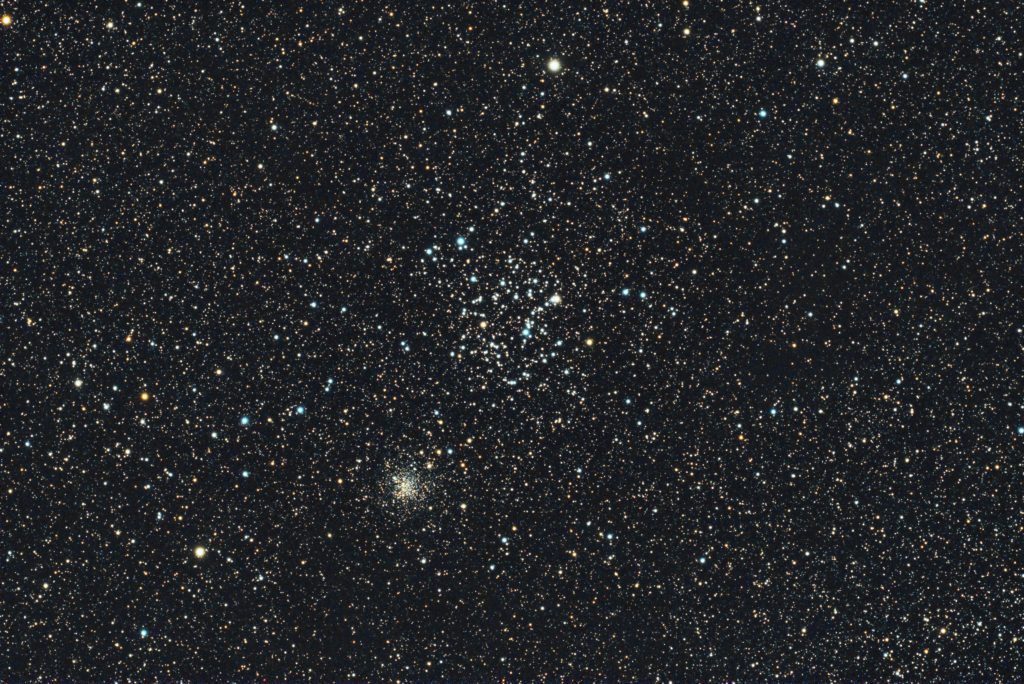The ZWO FF80 quadruplet telescope consistently produces well-corrected, round stars and sharp views, without the need for a field flattener. Mounting a camera and filter wheel is effortless with the included adapters, and precise framing is facilitated by the manual rotator. The dual-speed RAP focuser enables accurate manual focusing. While the f/7.5 ratio may be slower for light collection, it ensures superb color correction and round stars, particularly beneficial for APS-C and full-frame sensors, eliminating the need for an extra field flattener. There’s also an optional reducer available for those seeking a faster scope at f/5.7 and a 456mm focal length.
ZWO and Astroshop.eu generously provided their latest FF80 quadruplet refractor telescope for an unbiased review. I had the opportunity to evaluate it during chilly January days in 2024. This review covers the telescope’s technical specifications, my astrophotography setup, and the initial images, including a comet and the Orion Nebula captured with the ZWO FF80. Finally, I’ll share my conclusive thoughts.
Technical specifications
Flat Field design
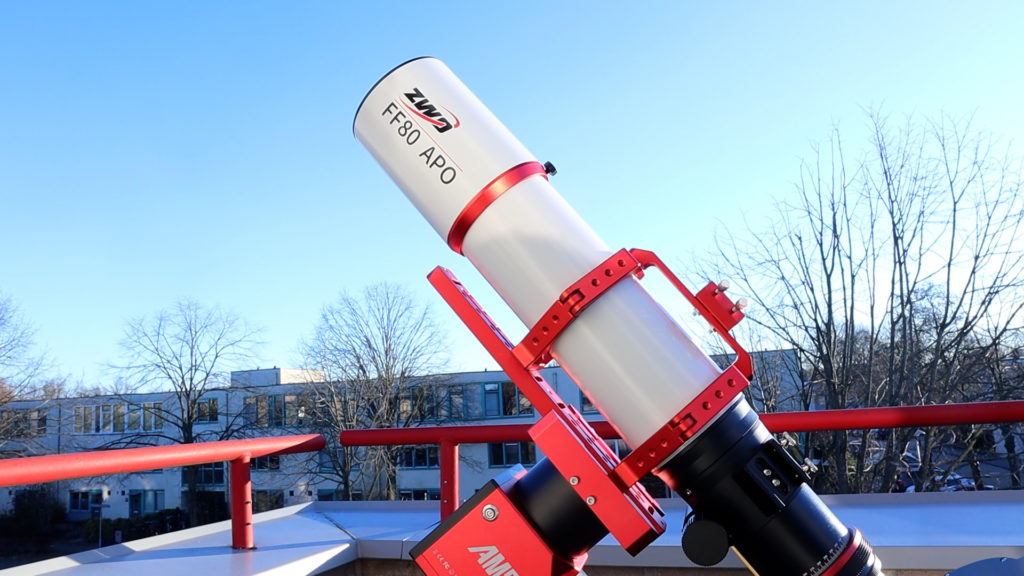
There are a couple of features about this telescope that got me very excited! First of all, The “FF” in ZWO’s FF80 stands for a flatfield optical design. This means you’ll get nice, round stars across your camera’s field of view without the need to purchase an additional field flattener. There’s also no struggle to calculate and achieve the exact back focus required for the field flattener to avoid elongated stars toward the edges of the field of view, as is the case with other (triplet) refractor telescopes.
Quadruplet lens with 2 ED elements
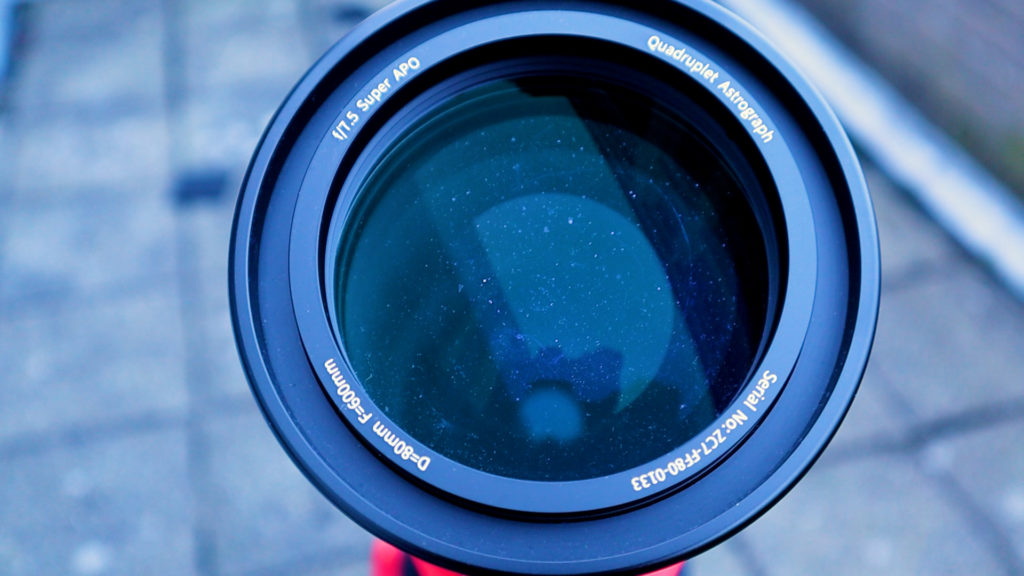
Thanks to the 3+1 quadruplet lens design with two extra-low dispersion elements, the lens promises high-quality color views of the night sky. The telescope comes standard with a manual rotator, allowing you to frame objects exactly as you want them for photography.
Aperture, focal length, and f/ratio
With an 80mm aperture and 600mm focal length, its native f/ratio is 7.5. An optional 0.76 reducer can be purchased with the telescope, reducing the focal length to 456mm at f/5.7. This provides a larger and brighter field of view, minimizing your imaging time. The telescope boasts a compact and lightweight design, with the telescope weighing only 3.9kg, and the full package, including tube rings and other accessories, weighing 4.7kg.
Photographic Adapters & RAP 1:10 focuser

The telescope includes several photographic adapters, making it easy to attach your camera for astrophotography purposes. It also features a dual-speed 1:10 RAP focuser for fine-tuning focus.
Camera & setup to test the ZWO FF80 Telescope
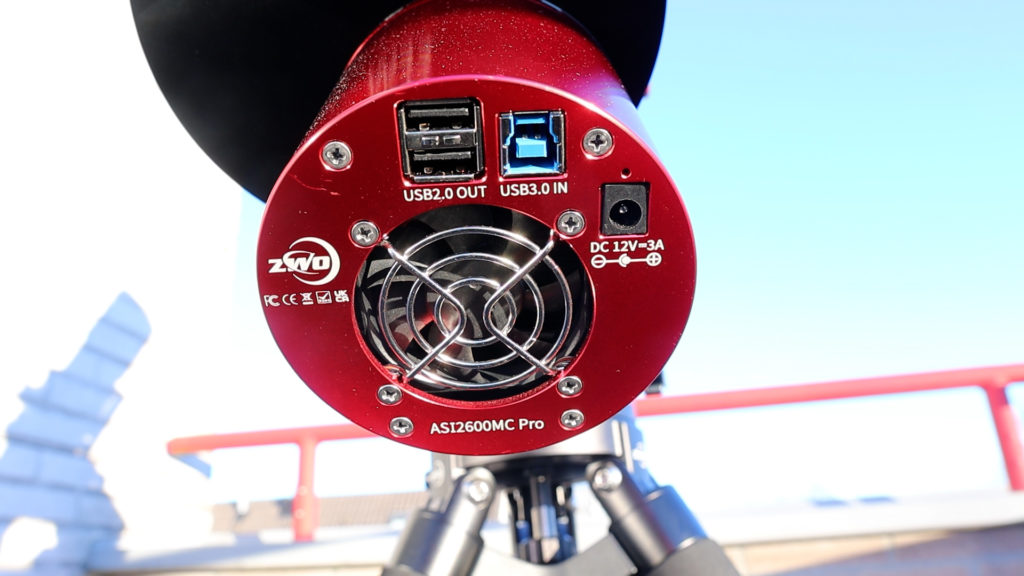
For this review, I paired the FF80 telescope with an ASI2600MC Pro color camera. This APS-C-sized astro camera boasts a 26-megapixel resolution, falling just shy of the full-frame dimensions. This choice allowed me to assess whether the FF80 telescope consistently produces round, well-color-balanced stars, extending to the edges of the photos.
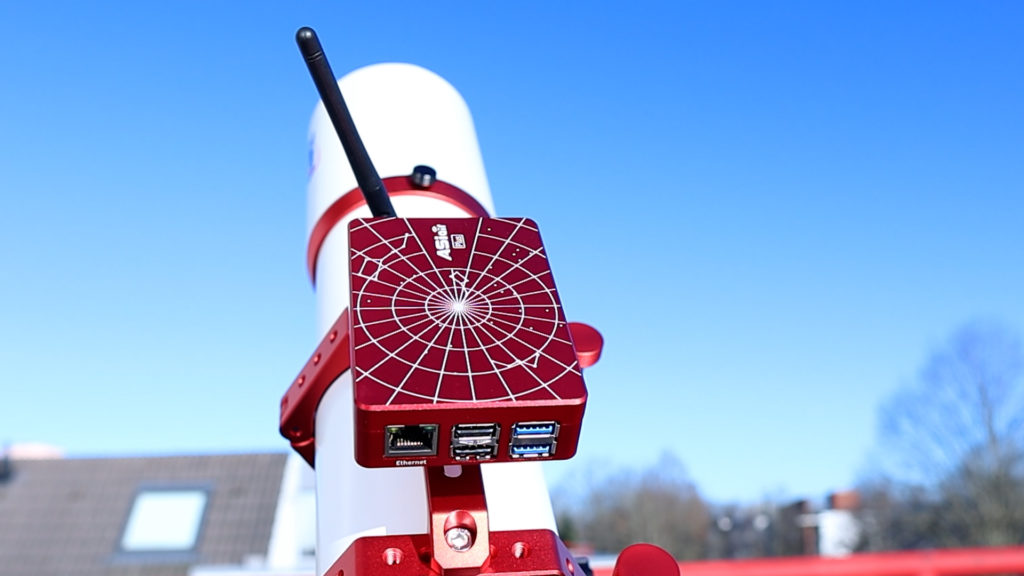
I used my ASIAIR Plus to control the entire astrophotography setup. It has become my primary go-to device for capturing deep-sky objects. You can explore more details about the ASIAIR Plus here, and I will make more content about wireless astrophotography for future content. So if you’re passionate about astro-gear and astrophotography, don’t forget to check out this website regularly and subscribe to my YouTube channel.
The ZWO FF80 Quadruplet Refractor Telescope is available at Astroshop (EU), Agena Astro (USA), and High Point Scientific (USA).
First light!

Capturing Comet 62P with the ZWO FF80 Telescope
As luck would have it, we experienced a couple of clear nights in early January 2024 in the Netherlands, a rare occurrence during our typically cloud-covered winter until mid-February. What was even more surprising was the visibility of Comet 62P/Tsuchinshan at my latitude (52 degrees north). This comet, categorized as a short-period comet, completes an orbit around the sun every 2330 days (6.38 years). During my capturing attempt, the comet was at a distance of 75 million kilometers from Earth. NASA/JPL has not classified 62P/Tsuchinshan as potentially hazardous because its orbit does not bring it in close proximity to Earth. For a live update on the comet’s whereabouts and brightness, you can check out The Sky Live.
I attempted to create a timelapse of the comet, tracking it for three hours with 60-second exposures, resulting in about 180 photos. I processed the images in Pixinsight to remove light pollution and align the stars, ultimately producing this video. Capturing moving objects in our solar system is always exciting and adds to the enjoyment of astrophotography!
Capturing an open star cluster (M35) with the ZWO FF80 Telescope
Next, I attempted to capture Messier object number 35. Open star clusters like Messier 35 are amazing. Astronomers have calculated that, on average, there is at least one planet per star, resulting in many millions of potentially habitable planets in our Milky Way alone. In the picture, you can also spot NGC 2158, and the stars in this star cluster are believed to be a whopping 2 billion years old. I took 30 photos, each with a one-minute exposure time. The picture showcases stars that appear nice and round, with minimal elongation or color aberrations, even towards the edges. I have not cropped this photo, so you’re viewing the full 26MP-sized image.
Capturing the Orion Nebula (M42) with the ZWO FF80 Telescope
I couldn’t resist capturing the most popular object in our winter sky, namely the Orion Nebula (M42)! As you may know, M42 is the closest and brightest nebula visible to the naked eye in the winter sky, situated in the constellation Orion, just below Orion’s belt. It’s easily visible to the naked eye, serving as a remarkable stellar nursery where new stars emerge from a molecular cloud of gas. These young stars are surrounded by protoplanetary disks, potential birthplaces for planets like ours. I captured 60 color photos, each lasting 60 seconds without using any filter. With a 7nm ZWO H-alpha filter, I also took 30 photos lasting 300 seconds each, attempting to capture the abundant ionized hydrogen. The pictures were processed in PixInsight, resulting in the final image.
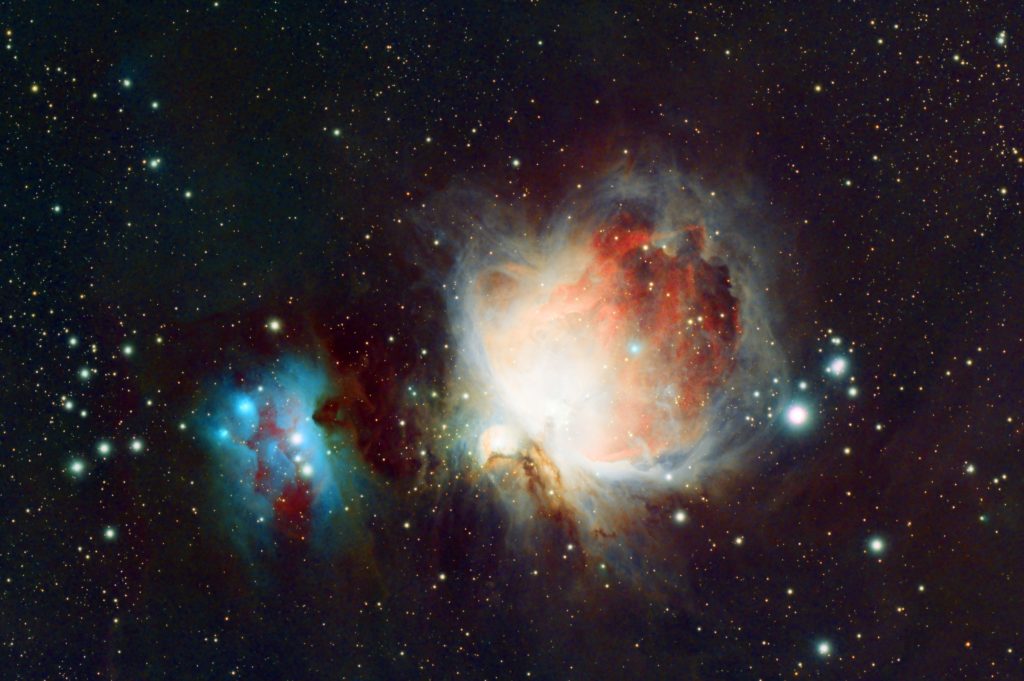
Final Verdict
Let me express my gratitude once again to astroshop and ZWO for lending me the telescope for this review, without any strings attached. Astroshop is a highly reliable astroshop in Europe, with physical stores in Germany, France, Belgium, and other countries across Europe. I have purchased a lot of my astrogear from astroshop, and the deliveries have always been reliable and on time, as promised, without any issues. I never accept money for reviews, allowing me to form my own opinions about the quality of astrogear products like this telescope.
The FF80 quadruplet telescope consistently delivered round and well-color-corrected stars in my photos and provided a sharp view of the Orion Nebula. Mounting my camera and filter wheel to the telescope was easy, thanks to the adapters that came with the FF80. I could easily frame the objects exactly the way I wanted due to the manual rotator that comes with the FF80. Additionally, precise manual focusing is easy thanks to the dual speed RAP focuser
Even though the f/7.5 ratio is somewhat on the slow side for light collection, its slower f/ratio ensures excellent color correction and round stars across your images, which is especially useful for APS-C and full-frame camera sensors. This eliminates the need for an additional field flattener and the associated challenges of calculating and implementing the correct back-focus. This means no more nights spent troubleshooting elongated stars at the edges of my photos! For those desiring a faster scope, an optional reducer is available for the ZWO FF80 Telescope to achieve f/5.7 at a 456mm focal length. I’ll explore this option in a future video, so stay tuned!
Overall, the telescope is well-constructed, with ZWO overseeing quality control and providing a factsheet detailing the checks made for each telescope. This additional assurance instills confidence in the telescope’s reliability, and this is complemented by the inclusive 2-year warranty. In conclusion, I thoroughly enjoyed reviewing this telescope, and I’m contemplating keeping it—though that’s a sentiment I often have with most astrogear.
The ZWO FF80 Quadruplet Refractor Telescope is available at Astroshop (EU), Agena Astro (USA), and High Point Scientific (USA).
Until next time, I wish you clear skies!
